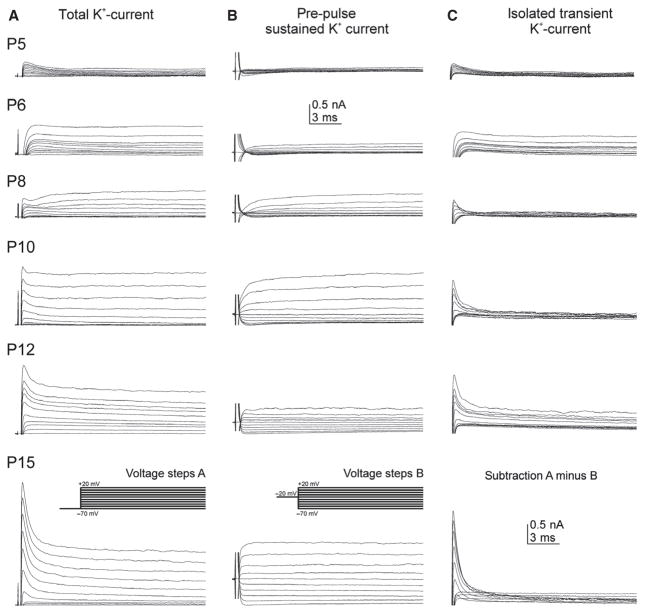Fig. 5.
Voltage-gated potassium currents are present in MN5 from P5 on. The total voltage-gated potassium current was evoked by 400-ms depolarizing voltage steps from −70 to +20 mV from a holding potential of −70 mV (A, also see inset in bottom trace). Sustained voltage-gated potassium current was elicited from a holding potential of −70 mV with a 200-ms pre-pulse to −20 mV before voltage steps from −70 mV to +20 mV in 10-mV increments were applied (B, also see inset in bottom trace). The pre-pulse inactivated transient voltage-gated potassium currents. Transient voltage-gated potassium current was isolated (C) by offline subtraction of sustained currents (B) from total potassium currents (A). Transient voltage-gated potassium currents were detectable from P5 on (A, C, top traces), with progressively increasing amplitudes and sharpness through pupal development (A, C) until P15 (bottom trace). Transient currents activated between −50 and −60 mV. The current peaked within 3 ms (C). Sustained potassium current activated slower. At all stages, the activation voltage was between −30 and −40 mV (B). Sustained current amplitude increased until P10 (B, third trace from the bottom). After that, current amplitude was decreased at P12 and increased again at P15 (B, bottom two traces).

